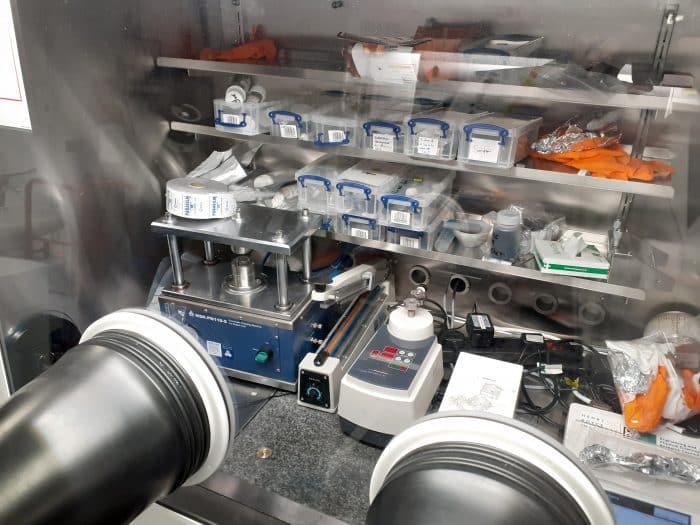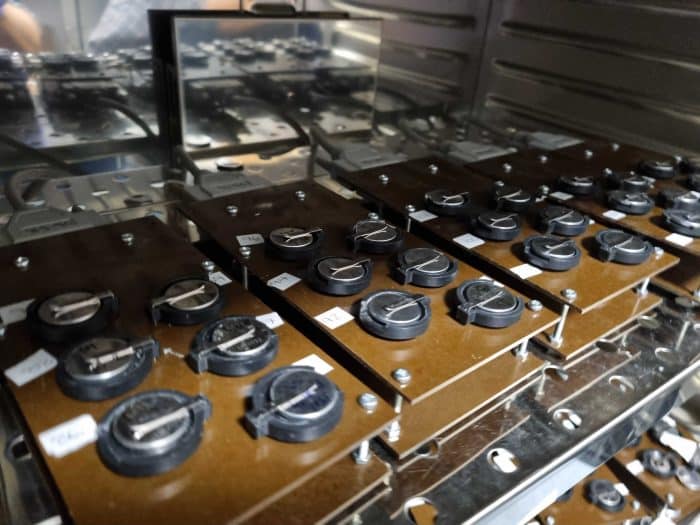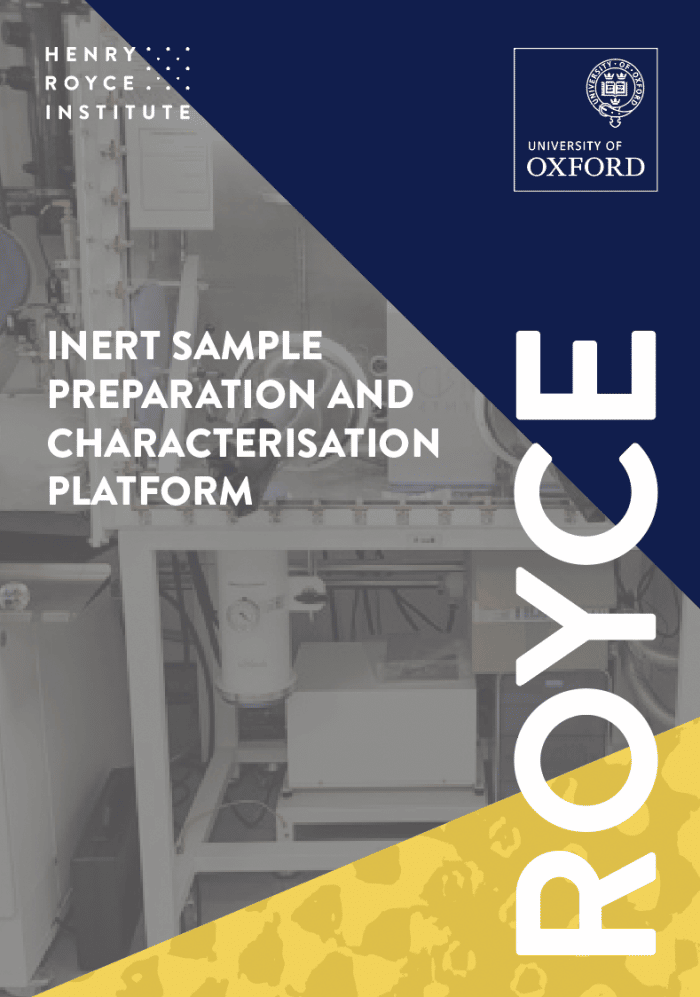This website uses cookies so that we can provide you with the best user experience possible. Cookie information is stored in your browser and performs functions such as recognising you when you return to our website and helping our team to understand which sections of the website you find most interesting and useful.

Inert sample preparation and characterisation
About
Based in the Centre for Energy Materials Research (CEMR) at the University of Oxford, this technology platform is home to extensive capabilities for the handling and study of air-sensitive materials. The facility is designed to enable seamless transfer under continuous inert atmosphere from preparation stage through to a range of characterisation techniques, eliminating the risk of reaction with ambient moisture, CO2 or O2.
Air exposure can interfere with many materials properties and have a detrimental effect on their performance. This is particularly problematic in energy applications which often involve sensitive electrochemical processes, reactions at interfaces, and the handling of highly reactive compounds. For these reasons, energy materials research is frequently confined to gloveboxes. A key challenge with this approach is that in most cases gloveboxes are operated as isolated units and only offer space for a limited range of experiments without transfer.
In this Royce Technology Platform, uninterrupted handling and analysis of air-sensitive samples is achieved through three key strategies:
- Interconnecting gloveboxes with linking antechambers and an automated inert transfer trolley
- Locating benchtop equipment in gloveboxes and operating the instruments under inert atmosphere. Key capabilities include X-ray diffractometry (XRD), nuclear magnetic resonance (NMR), atomic force microscopy (AFM), physical vapour deposition (PVD) and others
- Using transfer suitcases which can be docked onto larger external instruments such as X-ray photoelectron spectrometers (XPS), electron microscopes (EM), and synchrotron beamlines; these can all be opened directly to vacuum
These inert handling facilities form part of a wider ecosystem of energy materials research within the CEMR at Oxford involving the academic research groups of several Department of Materials Principal Investigators, as well as active involvement of industrial partners through collaborative R&D programmes. A core focus of the centre’s research is on next-generation energy storage materials driven by the UK’s dedicated battery research institute, the Faraday Institution, but the full range of activity extends beyond batteries to electrocatalysis, hydrogen materials, and fuel cells.
The CEMR is equipped with an extensive range of electrode processing, multi-format cell assembly and electrochemical cycling equipment. Characterisation tools such as GC-MS and liquid-state NMR permit the study of electrolyte breakdown products, and the chemical composition of surface films can be investigated by XPS. Specialised cell designs enable operando investigations with techniques such as XRD, XPS and online electrochemical mass spectrometry (OEMS) as the electrochemical process unfolds.



Platform Lead

Dr Robert House
Technology Platform Lead: Inert Sample Preparation and Characterisation
Dr Robert House is a Senior Research Fellow in the Department of Materials at the University of Oxford. Following a first degree in Natural Sciences from the University of Cambridge, Robert completed his DPhil at the University of Oxford, focused on cathode materials for Li-ion and Na-ion batteries. In 2021, he was awarded an independent research fellowship by the Royal Academy of Engineering to establish his own research group which focuses on understanding the structural and electrochemical properties of materials for energy storage. In his work, he employs a wide range of tools including spectroscopy, diffraction, synthetic techniques, and other advanced materials characterisation methods. He has also collaborated with several internationally recognised companies in the battery industry. Since 2021, Robert has been leading Royce’s Inert Sample Preparation and Characterisation Technology Platform at the University of Oxford.
Facilities
The inert handling Technology Platform also benefits from close ties with four other key facilities located within Oxford Materials offering a broad range of complementary specialist analytical tools and expertise:
Brochure
Further Resources
A more detailed presentation about the Technology Platform and its capabilities can be found here (embed link: https://ox.cloud.panopto.eu/Panopto/Pages/Viewer.aspx?id=a9e72f09-f556-45c5-86a5-af0800be19b9). To hear how these facilities are being used in lithium battery research by members of the Materials Department, follow these links:
- Dr Boyang Liu https://ox.cloud.panopto.eu/Panopto/Pages/Viewer.aspx?id=a75e6fb0-eb95-4073-a7af-af0800b9db45
- Dr Yige Sun https://ox.cloud.panopto.eu/Panopto/Pages/Viewer.aspx?id=c519af5f-ba7f-4bd0-98f6-af0800b6e26e
- Yvonne Chart https://ox.cloud.panopto.eu/Panopto/Pages/Viewer.aspx?id=7ff43d59-7b0b-4787-b809-af0800a671df
For access to the Inert Sample Preparation and Characterisation Technology Platform facilities or for further information, please contact royce.materials@materials.ox.ac.uk.
Contact
Please contact Robert House to discuss opportunities for collaboration. You can also contact research and Business Engagement Manager, Robin Morris, with enquiries about access to facilities.







